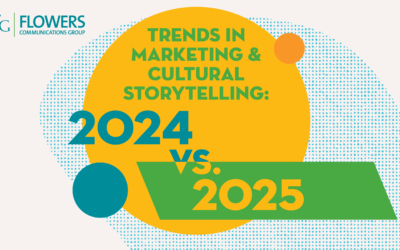In recent years, many companies worldwide have made strides in prioritizing diversity, equity, and inclusion (DE&I) within their organizational frameworks. From implementing inclusive hiring practices to fostering diverse work environments, businesses have recognized the inherent value of representation across all levels. The needle is moving, and the progress is applauded. Yet, despite these concerted efforts, a pervasive challenge persists: the ascent of diverse talent to leadership positions remains a formidable hurdle.
A 4A’s report cited in Forbes shed light on the fact that, “while more people of color were being hired into the advertising industry in 2022, 80.7% of advertising’s C-suite and executives were white, as were 77.56% of its VPs, SVPs, managing directors and equivalents. This suggests that advertising has benefitted from the cultural proximity of people of color, yet these professionals do not experience the economic windfall of their impact. And that’s a problem.”
The PR industry faces the same challenge. According to the U.S. Bureau of Labor Statistics, the makeup of public relations managers in the U.S. is predominantly white (91%) with 7.6% Hispanic Americans, and only 4.3% African Americans and 2.3% Asian Americans.
This Diversity Month, we are sharing insights on the benefits of diverse leadership teams and personal perspectives from our team members on how diverse leadership impacts them.
The evidence and business case for building diverse leadership teams is both tangible and immeasurable – increased performance, innovation, employee retention, better customer relationships, and sense of trust. A Diversity Matters report from McKinsey & Company found that leadership diversity is convincingly associated with holistic growth ambitions, greater social impact, and more satisfied workforces. Specifically, as it relates to the PR and marketing industry, a diversely staffed agency delivers more creative and innovative campaigns for clients because of the various life experiences brought to the table. At FCG, team and leadership diversity reflect differences in gender, ethnicity, nationality, gender identity and status, citizenship, religion, age, (dis)ability, and socio-economic status. And, if you think DE&I is a trend, note that the U.S. Census Bureau projects that 1 in 3 Americans will be a race other than white by 2060.
Despite the “racial reckoning” in 2020 when companies and brands made historic promises to do right by Black America and other marginalized communities, the diversity data in communications professions shows little improvement.
Marketer and cultural translator Dr. Marcus Collins says this is endemic of something deeper. “The unspoken problem in advertising has less to do with diversity on the surface and more to do with how diverse talent remains absent from the reward system of the institution by way of leadership roles and ownership opportunities. To ignore this fact is to ignore the access that people of color have given advertisers into a world that is not their own.”
Irrespective of industry, size, and location, companies with diverse leadership teams and/or boards of directors have impressive, noteworthy benefits, such as smarter teams, higher company financial returns, and environments where everyone feels valued and heard.
Our multigenerational team members at FCG shared their thoughts on how they feel when companies don’t have diversity in leadership. “I get real nervous. I think about homogenous organizations where everybody has the same thought,” reflects VP Michael Coburn. “It’s like a party where there’s only one song. It can happen. It can work. But it’s gonna be a very boring party,” laments CD Ernesto Matos. And, Derrick Clifton, Media Relations director, comments that, “Diversity isn’t a deficit, it’s a strength. Having people with various viewpoints at the table, who come from different backgrounds, makes sure your campaigns and environment as a whole are as strong as they can be.”
Tune into our LinkedIn and Instagram vlog series focused on the importance of cultivating diverse leadership teams. Our multicultural experts share real perspectives on:
- Why diverse leadership is important
- Their thoughts when they don’t see diverse leadership
- The top barrier to more diverse leadership in our industry
- The impacts of diverse leadership on stakeholder relations
- How diversity is connected to innovation and creativity
We encourage companies and brands to reflect on the questions and responses to the above and consider the message being sent to employees, customers, and the marketplace by the lack of diversity in leadership. Based on our work with clients, we recognize that everyone is at different points in their DE&I journey. However, given the changing face of today’s marketplace, it is imperative to purposefully mentor, sponsor, position, and train diverse talent to deepen the leadership pipeline. If not now, when?
Jasmine Flowers Mazyck is Managing Director at Flowers Communications Group




